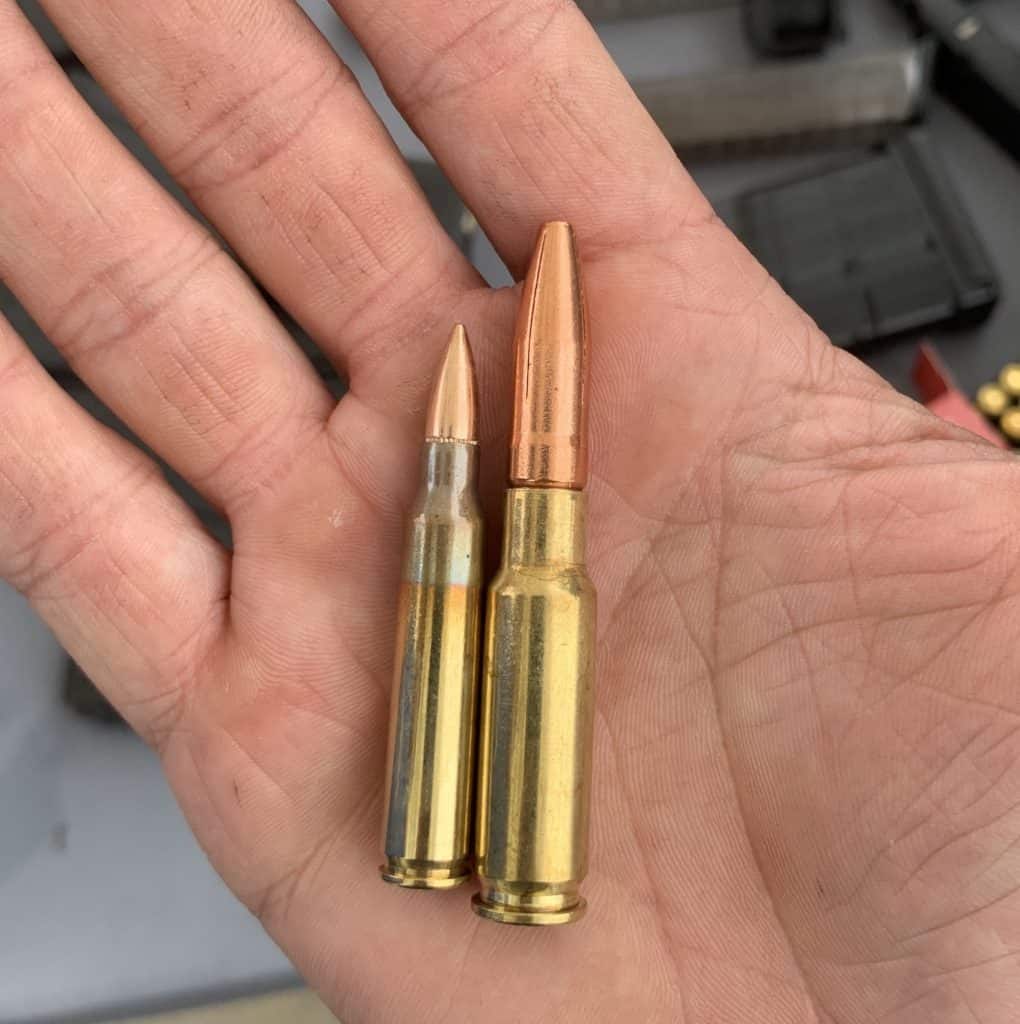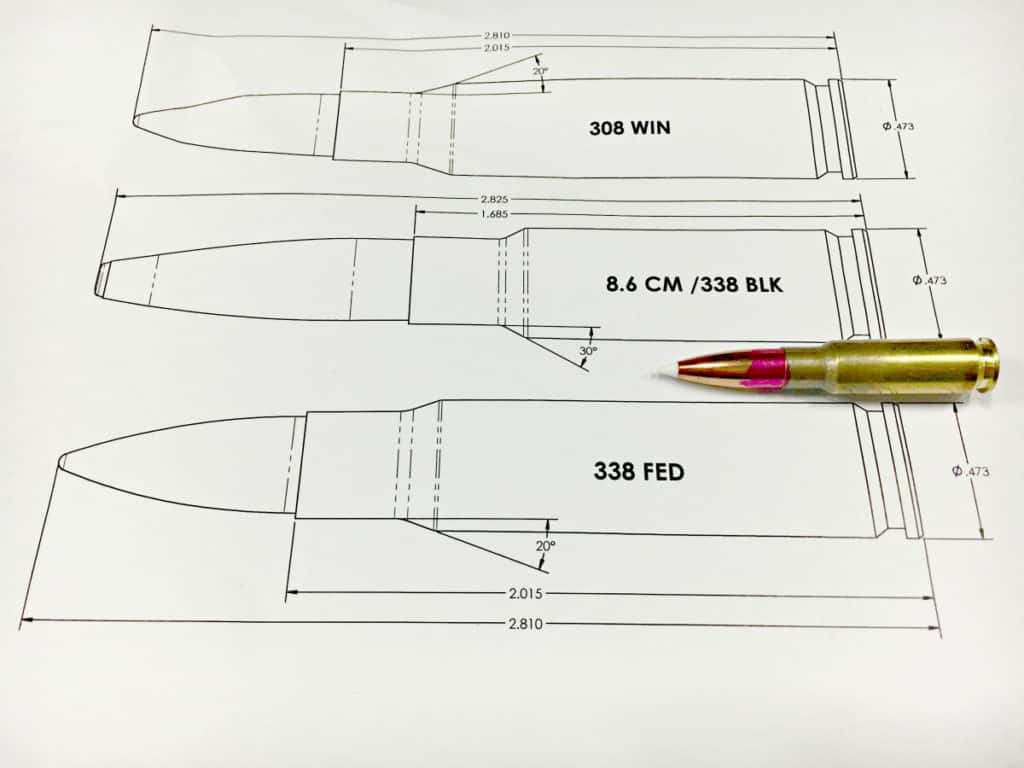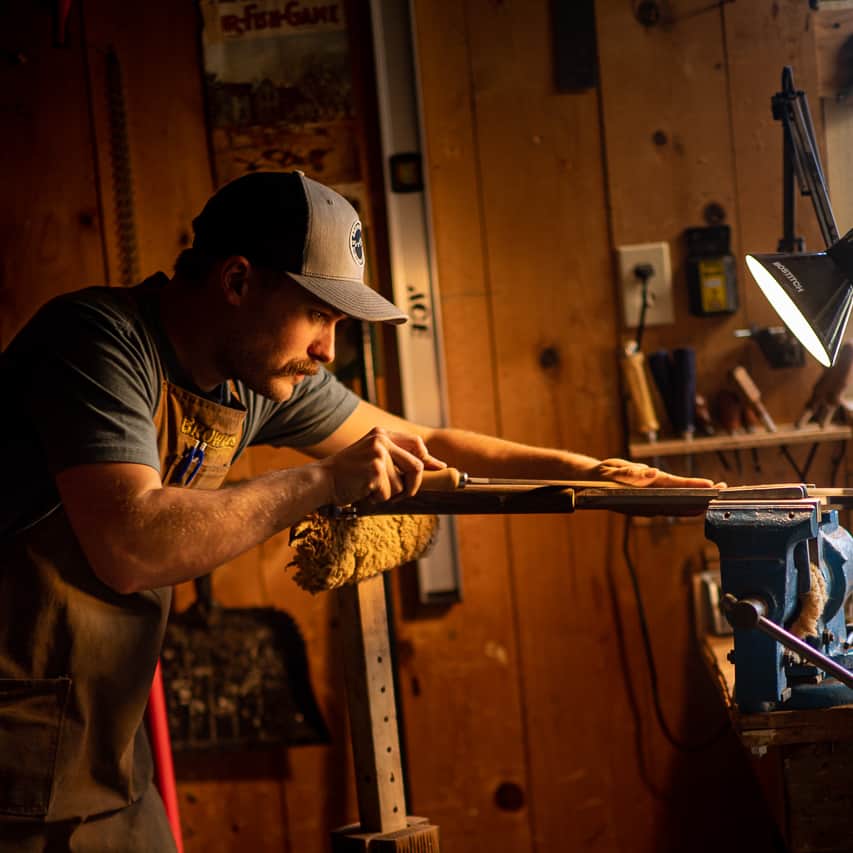
The 8.6 Blackout is quickly becoming the new hotness in the cartridge world. Often referred to as the 300 Blackout’s big brother, it fills the same subsonic role in an AR-10 platform. It wasn’t long after the 8.6 was introduced that people started to identify that it was almost identical to the .338 Federal.
The 8.6 Blackout is closely compared to the 338 Federal. However, it differs from the 338 in both bullet weight and velocity. The 8.6 shoots a heavier bullet much slower than the 338 Federal. Other than looks, the two cartridges are very different.
Despite being very different, they both fulfill their unique roles within the hunting world.
Affiliate Disclosure: This article may contain affiliate links. When you use these links, I earn a small commission from each sale generated at no cost to you. This commission helps me continue to put out free content. I work a full-time job that I am very happy with; therefore, I don’t need this commission and am not obligated to speak highly of any product. Everything written is my own opinion: the good, the bad, and the ugly.
The 8.6 Blackout
The 8.6 Blackout, also known as the 8.6 BLK, 8.6×43, and 8.6 Creedmoor, was developed and invented by Kevin Brittingham and the crew at Q, Discreet Ballistics, and Hornady. It is a trimmed-down 6.5 Creedmoor case that is necked up to accept .338 diameter bullets.
It was created to feed the heaviest of .338 diameter bullets in standard 7.62 NATO Magazines without modification. The 8.6 Blackout was designed for use in semi-automatic rifles, specifically the AR-10 platform. Currently, the ammunition producers are loading supersonic loads with 210 gr bullets and subsonic with 288-300 gr bullets.
The 8.6 Blackout is good for hunting all-sized game animals at subsonic velocities. Using supersonic loads, Kevin Brittingham shocked everyone by taking the 8.6 Blackout to Africa and taking a Cape Buffalo with it, widely considered one of the world’s toughest animals.
Take a Look at the 8.6 Blackout Ballistics Here!
The .338 Federal
In 2006, Federal adopted the popular .33-08 wildcat, effectively renaming it the .338 Federal. This was the first time Federal attached their name to a caliber. Advertised as a non-magnum cartridge with magnum energy, it is made by necking .308 brass up to accept .338 diameter bullets. This created a compact and powerful package ideally suited for 180-210 grain bullets. This cartridge is an all-around great North American hunting cartridge.

Cartridge Specs
A quick look at the cartridge specs above shows us that the specs are identical in some regards and drastically different in others. The overall length of the cartridges is very similar; however, the case length of the 8.6 Blackout is 0.330″ shorter than the .338 Federal. On the other hand, the base diameter is identical, meaning that the standard .308 bolt face will work with either.
Ballistic Comparison
First and foremost, the ballistics can’t be compared in a linear manner. The cartridges were designed for different things and should be treated as such. Your bullet choice is crucial in both of these calibers. The team over at Ballistic Studies points out that many .338 bullets are made with thick jackets designed to perform at higher velocities. Neither of these cartridges pushes those high velocities, so picking the right bullet for the job is essential. Also, the faster twist rate of the 8.6 Blackout may prove detrimental when using those thinner jackets. Following loading data published regarding these calibers is best to get the most out of them.
If we compare these two calibers with the same bullet weights, the 338 Federal would have higher velocities because the cartridge can hold more powder. When comparing the 210 gr Barnes TSX bullet in both, we see that the 338 Federal shoots it at a maximum of 2,570 fps, and the 8.6 BLK is 2,000 fps. A pretty significant difference, if left at that. However, the 8.6 BLK velocities are out of a 16″ barrel, and the 338 out of a 24″ barrel. Once again, it is hard to compare these two linearly.
If you want to take a more in-depth look, I wrote a whole article on the ballistics of the 8.6 Blackout with both the supersonic and subsonic capabilities compared to some popular calibers today.
Is the 277 Fury the Next Great Hunting Cartridge?
Subsonic Performance
For subsonic performance, Gorilla Ammunition advertises two options for the 288 gr bullet. One is ideal for 16″ barrels and the other for either 8″ or 12″, both shooting approximately 1050 fps. For supersonic performance, they have an option loaded with 210 gr Barnes TSX bullets moving 1970 fps out of a 12″ barrel.
To simplify it, the 338 Federal is much faster than the 8.6 Blackout. But the .338 won’t handle the heavy bullets as well, increasing the overall cartridge length considerably.

Why the 8.6 Blackout is Not the .338 Federal
While the ballistics share some similarities, I see the 8.6 Blackout as a step forward from the .338 Federal. The COAL or cartridge-over-all-length is shorter with the same weight bullet, allowing it to function in 308-length magazines with heavy bullets. You can get away with a short-action length receiver and still shoot heavy 300-grain bullets in a bolt action. This makes the adaptability to other already existing platforms that much easier. While you are able to shoot a .338 Federal in a short action, you will quickly be limited by the cartridge length as you increase the bullet weight.
Use coupon code KTG10 to get 10% off your order of $150 or more at Brownells.
Also, the 8.6 was developed to perform in shorter barrel lengths than the .338. This won’t make much of a difference for the shooter looking for a traditional hunting rifle. However, this is ideal for those looking for a compact hunting or urban-style rifle. The twist rate for the 8.6 is a screaming fast 1:3, as close to threads as you can get. Faxon currently makes barrels for the AR-10 platform and some bolt-action barrels that are found here. This helps stabilize the heavier bullets out of the short barrel. Most .338 Federals were made with 1:10 twist rates, ideal for the lighter 200-grain bullets.
The subsonic capabilities are really where the 8.6 jumps ahead of the 338 Federal. The Gorilla Silverbacks are dead quiet… Even at 1,050 fps a 288 gr projectile hits hard.
In short, while the overall cartridge length, bullet diameter, and base diameter are the same, they do two entirely different jobs.

My Opinion on the 8.6 Blackout
I was lucky enough to get some trigger time with the 8.6 Blackout at the 2022 Brownells GunCon event. Faxon Firearms brought their suppressed bolt action 8.6 to show how it performed. They provided both standard and subsonic ammo to run through the gun.
The recoil was very mild and the kind that made you grin ear to ear. Both the supersonics and subsonics were quiet, but the subsonics were really quiet. Like, really quiet… With both loads, I had no problem ringing steel out at 100 yards; it was easy, as it should be.
The 8.6 Blackout is not a rebranded 338 Federal. It all depends on what you personally are looking for in the cartridge. If you have no plans of shooting it suppressed or only want to run lighter bullets through it, the .338 Federal might be a better option. Do your research and find what will fulfill your needs the best.

Written by: Kurt Martonik
Kurt is a Gunsmith, Reloader, Hunter, and Outdoorsman. He grew up in Elk County, Pennsylvania, where he became obsessed with the world of firearms. Following high school, Kurt enlisted in the United States Air Force as a Boom Operator, where he eventually rose to the position of Instructor. After his military service, he attended the Colorado School of Trades(CST) in Lakewood, CO for gunsmithing. Following graduation, he accepted a job at C. Sharps Arms in Montana, where he worked as a full time stockmaker and gunsmith.
There are no other best articles about 8.6 blackouts except this one. At least I didn’t find this same quality. Thanks a lot.
Thank you! I really like the caliber for what it was designed for!
After 40 years of watching new products come on the scene in the shooting world, this one has me very excited and I feel that it truly utilizes the new technology for a new and useful product.
I agree! It’s exciting to see new cartridges coming out that aren’t advertising 50 fps faster than this or that anymore. They are purpose-built and optimized for one platform or another.
Amazing article. So precise, so articulate, so purposeful. Not a word extra nor one missed. Well done Sir.
Thank you! I appreciate the kind words!
Been hearing about this cartridge for some time now, but it doesn’t seem to be getting much traction. To say it has better marketing than .338 Federal isn’t saying much 🙂
That said, I shoot .338 Federal as my primary hunting cartridge, but 8.6 Blackout doesn’t appeal to me whatsoever. I went from .308 to .338 Federal to get MORE supersonic performance, not less. .338 Federal works just fine in semiauto rifles, and some companies are successfully experimenting with subsonic variants.
Great article, but I’m not sure who this cartridge will appeal to.
Jim, this cartridge is actually getting a lot of traction within certain subsections of the gun community. The biggest benefit to the 8.6 over the .338 is its ability to launch the heaviest .338 bullets subsonic and still fit in a short action magazine. For those like yourself looking for the best supersonic performance, the .338 is much better in my opinion. It all comes down to what you want to use it for. Either have their place.
This is the second time Federal has attached their name to a cartridge. The 9mm Federal from the 1980s was a short-lived 9x19R offering from Federal and Charter Arms for some police departments that wanted to go 9mm but weren’t emotionally prepared to give up their revolvers. Unfortunately, it was nearly the same dimensions at the .38 S&W but operated at about twice the pressure. Everyone just sort of shuffled away with quiet, embarrassed muttering and the caliber died by the early 90s. A few people still have the guns and a few boutique dealers occasionally sell small runs of the brass.
Thanks for that bit of information, very interesting!!
Another fun one is to shoot 50BMG heads out of necked up 338 Lapua, known as the .50 Peacekeeper. Also turning down the 338 Lapua case to make the subsonic .50 Whisper which is great in a suppressed stainless 16” barrelled Ruger No. 1.
I did some writing on that .500 Whisper, really cool cartridges. A No. 1 would be really cool in that!